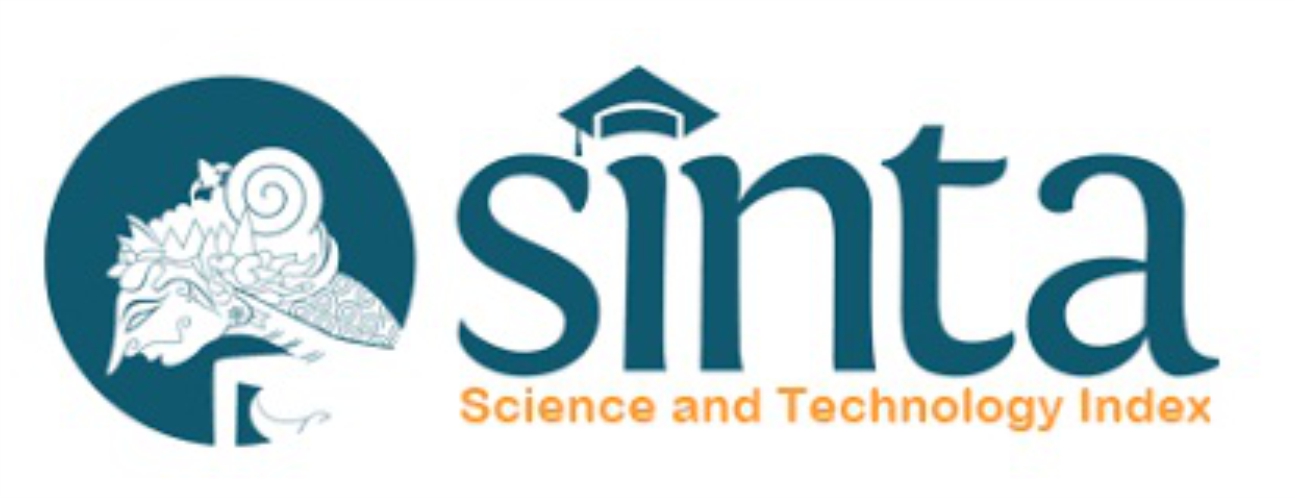Review Artikel: Metode untuk Meningkatkan Absorpsi Obat Transdermal
Abstract
The route of administration of transdermal drugs is preferred because it is easy to use. However, there are limitations associated with the difficulty of drugs penetrating into the skin. This is caused by the presence of the stratum corneum which is the main barrier for drug entry into the skin. Penetration of the drug into the skin can be through the trans-epidermal (transcellular and paracellular) route and the trans-appendegeal route depending on the dosage form. To increase the penetration ability of transdermal drugs, it can use chemical enhancers and physical enhancers. Chemical enhancers can be classified based on chemical structure or based on the mechanism of action. Chemical compounds that have the same functional groups can have different mechanisms of action depending on the physical-chemical nature. Chemical enhancers are categorized based on their chemical structure, including: water, alcohol, amides, esters, alcohol ethers, pyrrolidone, hydrocarbons, sulfides, surfactants, terpenes, phospholipids, vesicles. Whereas physical enhancers in the form of drug delivery use external energy to encourage or physically damage the stratum corneum. Physical enhancer methods such as Iontophoresis, Electroporation, Magnetophoresis, Sonophoresis, Photomechanics, Radiofrequency, Thermophoresis, Microneedle, and Jet Injectors.
Keyword: transdermal; permeation enhancer; chemical enhancer; physical enhancer
Full Text:
PDF (Bahasa Indonesia)References
A. Z. Alkilani, M. T. C. McCrudden, and R. F. Donnelly, “Transdermal drug delivery: Innovative pharmaceutical developments based on disruption of the barrier properties of the stratum corneum,” Pharmaceutics, vol. 7, no. 4, pp. 438–470, 2015, doi: 10.3390/pharmaceutics7040438.
R. Yang, T. Wei, H. Goldberg, W. Wang, K. Cullion, and D. S. Kohane, “Getting Drugs Across Biological Barriers,” Adv. Mater., vol. 29, no. 37, 2017, doi: 10.1002/adma.201606596.
H. Tanwar, “A Review: Physical Penetration Enhancers For Transdermal Drug Delivery Systems,” IOSR J. Pharm. Biol. Sci. e-ISSN, vol. 11, no. 1, pp. 101–105, 2016, doi: 10.9790/3008-1111101105.
H. Marwah, T. Garg, A. K. Goyal, and G. Rath, “Permeation enhancer strategies in transdermal drug delivery,” Drug Deliv., vol. 23, no. 2, pp. 564–578, 2016, doi: 10.3109/10717544.2014.935532.
L. N. Carpentieri-Rodrigues, J. M. Zanluchi, and I. H. Grebogi, “Percutaneous absorption enhancers: Mechanisms and potential,” Brazilian Arch. Biol. Technol., vol. 50, no. 6, pp. 949–961, 2007, doi: 10.1590/S1516-89132007000700006.
H. Benson, “Transdermal Drug Delivery: Penetration Enhancement Techniques,” Curr. Drug Deliv., vol. 2, no. 1, pp. 23–33, 2005, doi: 10.2174/1567201052772915.
P. Karande and S. Mitragotri, “Enhancement of transdermal drug delivery via synergistic action of chemicals,” Biochim. Biophys. Acta - Biomembr., vol. 1788, no. 11, pp. 2362–2373, 2009, doi: 10.1016/j.bbamem.2009.08.015.
T. Haque and M. M. U. Talukder, “Chemical enhancer: A simplistic way to modulate barrier function of the stratum corneum,” Adv. Pharm. Bull., vol. 8, no. 2, pp. 169–179, 2018, doi: 10.15171/apb.2018.021.
J. Juan, I. Marlen, and C. Luisa, “Chemical and Physical Enhancers for Transdermal Drug Delivery,” Pharmacology, 2012, doi: 10.5772/33194.
P. Basnet, H. Hussain, I. Tho, and N. Skalko-Basnet, “Liposomal Delivery System Enhances Anti-Inflammatory Properties of Curcumin,” J. Pharma Sci, vol. 101, pp. 598–609, 2012, doi: 10.1002/jps.22785.
D. I. . Morrow, P. . McCarron, A. . Woolfson, and R. . Donnelly, “Innovative Strategies for Enhancing Topical and Transdermal Drug Delivery,” Open Drug Deliv. J., vol. 64, no. 14, p. 220, 2007, doi: 10.1016/j.addr.2012.04.005.Microneedles.
V. Mathur, Y. Satrawala, and M. S. Rajput, “Physical and chemical penetration enhancers in transdermal drug delivery system,” Asian J. Pharm., vol. 4, no. 3, pp. 173–183, 2010, doi: 10.4103/0973-8398.72115.
A. Manosroi, P. Khanrin, and W. Lohcharoenkal, “Transdermal absorption enhancement through rat skin of gallidermin loaded in niosomes,” Int J Pharm, vol. 392, no. 304–310, 2010, doi: https://doi.org/10.1016/j.ijpharm.2010.03.064.
N. Li, L. Peng, and X. Chen, “Antigen-loaded nanocarriers enhance the migration of stimulated Langerhans cells to draining lymph nodes and induce effective transcutaneous immunization,” Nanomedicine Nanotechnology, Biol. Med., vol. 19, no. 1, pp. 215–223, 2014, doi: https://doi.org/10.1016/j.nano.2013.06.007.
S. Jain, A. K. Tiwary, and N. K. Jain, “Formulation and evaluation of ethosomes for transdermal delivery of lamivudine,” AAPS PharmSciTech, vol. 8, pp. 249–257, 2007, doi: https://doi.org/10.1208/pt0804111.
R. . Donnelly and T. R. . Singh, Novel Delivery Systems for Transdermal and Intradermal Drug Delivery. UK: John WIley and Sons, LLd, 2015.
K. Ita, “Dissolving microneedles for transdermal drug delivery: Advances and challenges,” Biomed. Pharmacother., vol. 93, pp. 1116–1127, 2017, doi: 10.1016/j.biopha.2017.07.019.
Y. Kim, J. Park, and M. R. Prausnitz, “Microneedles for drug and vaccine delivery ,” Adv. Drug Deliv. Rev., vol. 64, no. 14, pp. 1547–1568, 2012, doi: 10.1016/j.addr.2012.04.005.
S. Dharadhar, A. Majumdar, S. Dhoble, and V. Patravale, “Microneedles for transdermal drug delivery: a systematic review,” Drug Dev. Ind. Pharm., vol. 45, no. 2, pp. 188–201, 2019, doi: 10.1080/03639045.2018.1539497.
H. A. E. Benson, J. E. Grice, Y. Mohammed, S. Namjoshi, and M. S. Roberts, “Topical and Transdermal Drug Delivery: From Simple Potions to Smart Technologies,” Curr. Drug Deliv., vol. 16, no. 5, pp. 444–460, 2019, doi: 10.2174/1567201816666190201143457.
J. P. Ronnander, L. Simon, and A. Koch, “Transdermal Delivery of Sumatriptan Succinate Using Iontophoresis and Dissolving Microneedles,” J. Pharm. Sci., vol. 108, no. 11, pp. 3649–3656, 2019, doi: 10.1016/j.xphs.2019.07.020.
DOI: https://doi.org/10.18860/jip.v5i1.9157
Refbacks
- There are currently no refbacks.
Copyright (c) 2020 Viviane Annisa
© 2023 Journal of Islamic Pharmacy













